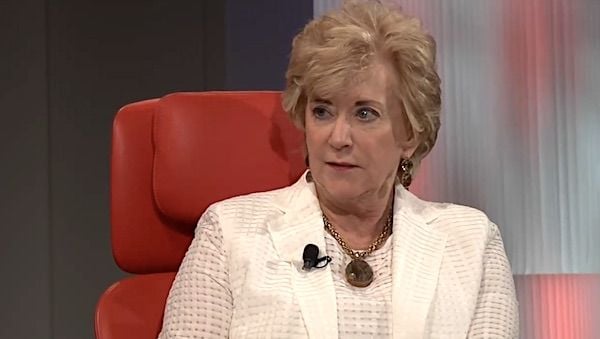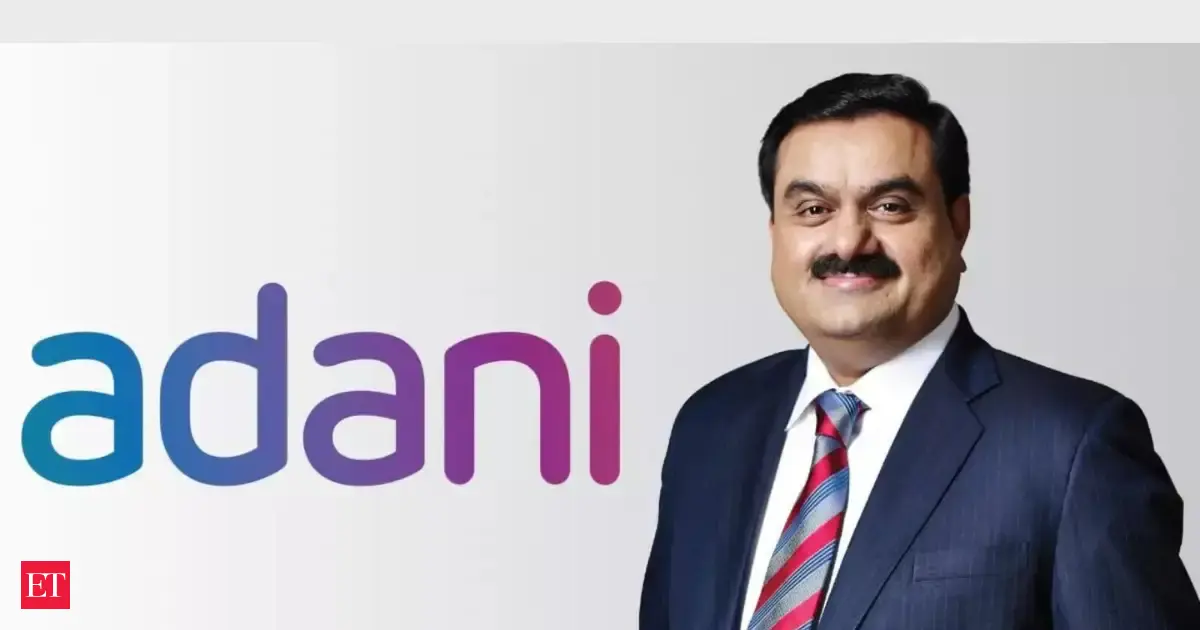By Realclear Wire,RealClearWire
Copyright wnd

DETROIT — Linda McMahon dotes on students from a distance as she tiptoes between classrooms, dipping in just long enough to observe a bit of the lesson, whisper questions to the principal, and give the teacher an encouraging word. Class is just too important to interrupt.
Once back in the hallway, like a proud grandmother, she beams. If they get what they need, and if they work hard enough, they can become architects or engineers, doctors or lawyers, well-paid welders or plumbers. The possibilities are endless. The kids really can do just about anything they want.
Unless, of course, one of them dreams of leading the Education Department. It might not be there when they grow up. McMahon says she plans to save education by shutting down the federal agency responsible for overseeing it. The mission, at times, can feel incongruent.
She is sending control of K-12 schooling to the states but tightening the federal grip on colleges and universities. She has flexed every authority at her disposal, like no Republican before her, but while trying to end those powers altogether. She intends to be the last secretary of education. “That’s the president’s charge to me,” McMahon tells RealClearPolitics. “I’m going to do my very best to make sure that happens.” Because Trump promised on the campaign trail to end what Jimmy Carter wrought.
The Department of Education opened its doors five decades ago and conservatives have waged a losing crusade against that agency ever since. Their arguments are familiar. Declining test scores. Exploding costs. Meddling regulators in faraway Washington are influencing student life from kindergarten to college, setting policy on everything from high school locker rooms to university loans. But despite their protests, that bureaucracy has endured. Until Trump. And until a confluence of the cataclysmic.
As the coronavirus pandemic brought parents of young children into the schoolhouse, albeit remotely, some were unimpressed and others scandalized by an ideological curriculum. Campus unrest, particularly after the Oct. 7, 2023, terror attacks in Israel, caused many to regret signing tuition checks or rethink sending their kids to college altogether.
Conservatives concluded long ago that the classroom was falling into chaos. Suddenly, a critical mass of Americans agreed.
Across the partisan and class divide, an overwhelming number of Americans believe elementary and high school education is failing to prepare children for adulthood. Only 26% report satisfaction with K-12 schooling, according to a Gallup survey released this month, while just 35% still believe a college education is important. Hence the opportunity for the hard reset. Hence what McMahon described in an agency-wide memo earlier this year as “our final mission.”
But while Trump issued an executive order calling for the Education Department to close, Congress created the agency. It cannot be shuttered with the stroke of his pen or deleted by a keystroke of a caffeine-addled DOGE programmer. Turning off the lights, McMahon says, is a work in progress.
A handful of lawmakers have already introduced legislation to eliminate the department. McMahon regularly consults with Capitol Hill but no on this topic.
“I’m not working on a specific plan,” she admits. The secretary isn’t involved in legislative strategy sessions, either. Asked if Republicans should make their move before the 2026 midterm elections, the secretary says she “couldn’t guess at this particular point what would be the most opportune time for Congress to take this up.” Instead, she’d like to “change the narrative of talking about dismantling the education department” and begin a new conversation about “returning it to the states.”
Republicans insist she is not changing the assignment midsemester. But before a mammoth department with half a century of history and an annual budget of $80 billion can be scrapped, the secretary believes the administration has “to kind of prove ourselves a little bit.” What she calls “first steps” are in order.
In an administration that prides itself on cutting bloat, McMahon has shown that she can slash and burn with the best of them. Through a series of buyouts and mass firings, she has cut the department workforce in half. Just six months on the job, she has already canceled more than $400 million in grants for so-called diversity, equity, and inclusion programs. Through it all, the secretary keeps giving away authority; the department has signed memorandums of understanding to offload responsibilities to other agencies.
Congressionally appropriated funds continue to flow to the states, but by the time school started around the country this year, the department was already a shadow of itself. All of it is early evidence for McMahon’s ultimate vision: “The greatest bureaucracy can clearly go away, and nobody will notice.”
The secretary has been away on a 50-state tour to see and sample best practices at the local level while pushing the new Trump syllabus that begins and ends with the lesson that “education belongs closest to the child.” It is the reason she has made the trip here to Michigan where she will drop in on public, private, and charter schools all in the same day. But McMahon isn’t playing hooky as the department withers, and the administration isn’t engaged in a unilateral surrender.
Leaning on the Ivory Tower
Even as she takes steps to end the agency, McMahon has launched a war with a woke higher education system. Wielding grant money as a cudgel, she has already left some of the country’s most prominent college administrators whimpering in her wake.
To restore $175 million in grant funding, the University of Pennsylvania not only agreed to ban transgender athletes but restored the records of, and apologized to, female athletes who lost to swimmer Lia Thomas, a biological male.
To escape $400 million in sanctions, Columbia University paid a $221 million fine and agreed to sweeping reforms, pledging to follow laws banning the use of race in admissions and take steps to address antisemitism on campus.
To unfreeze $510 million in federal grants and contracts, Brown University paid a $50 million fine and agreed to similar reforms like the ones Columbia adopted. Additionally, the college agreed to stop performing sex-change surgeries and prescribing puberty blockers to underage children.
Those are just the summer blockbuster settlements. As the fall semester begins, more than a dozen other institutions of higher learning are under investigation for potential Title VI and Title IX violations. With some pride, McMahon reports that many colleges and universities are “taking a stronger look” at how their policies align with the law “because they don’t want to lose federal funding.” Lest any faculty lounge believe they have escaped scrutiny, she warns that her campaign against the Ivy Leagues was “just a shot across the bow.”
More than one administrator has doubted her only to watch their ivory tower, and their expensive legal teams, toppled. But not Harvard. The school that predates the nation’s founding has stood as a bulwark of resistance against a populist administration hell-bent on humbling progressive institutions of higher education.
A federal judge sided with Harvard shortly before McMahon sat down for an interview with RCP, ruling that the administration broke the law when it “used antisemitism as a smokescreen for a targeted ideologically motivated assault on this country’s premier universities.” The court ordered $2.2 billion in federal grants unfrozen. The secretary seems confident the case will be overturned.
“Harvard said this was a First Amendment case. It certainly was not,” she says. “We’re not trying to shut down anybody’s right to free speech,” she adds, “but we certainly want to make sure there’s no bias on campus.” Afterall, Trump campaigned on cleaning up antisemitism on campus, she continues, before pointing to ugly moments of prejudice that even that university has apologized for and documented.
Trump has launched a multi-pronged attack to conquer Cambridge. He has banned foreign students, threatened to take away tax-exempt status of the university and even to seize its patents. But as McMahon is locked in that fight, a war-weariness has emerged in certain corners of the administration.
“We want nothing less than $500 million from Harvard. Don’t negotiate, Linda,” Trump told McMahon during an August cabinet meeting. “They’ve been very bad. Do not negotiate.” His administration is now split behind closed doors between those who want a splashy settlement and others who are pushing for more permanent reforms. The hardliners insist that a one-time fine won’t cow a university with a $53 billion endowment, a sum larger than the GDP of some first-world countries.
“The education secretary, and the administration more broadly, has an opportunity to rewrite the contract between the American people and the elite university so that these schools once again serve the common good rather than narrow partisan left-wing interests,” says Christopher Rufo, a senior fellow at the Manhattan Institute whose activism led to the ouster of former Harvard president Claudine Gay last year over allegations of plagiarism.
Not since William F Buckley published “God and Man at Yale” in the 1950s has the conservative movement been so united in purpose on the education front or enjoyed so much political capital. Rufo calls it “a once in a generation opportunity.” With Trump in the White House and McMahon at the Education Department, he believes that it is now or never: “There is no second bite at the apple.”
If there is any confusion about what that social contract between the higher education and the state should look like, McMahon has traveled to Hillsdale College, a private Christian school famous for refusing federal funds, to outline her vision of the university.
Colleges that once stood as “repositories of civilization,” the secretary said in remarks that doubled as an open letter to university presidents, have been transformed “into factories for producing activists instead of thinkers.” Enroll, study, and after four years, the student was previously prepared “for a concrete vocation.” Instead, she reported that, on too many campuses, an undergraduate degree represents little more than a years-long attempt to “find yourself,” a journey that sometimes concludes in “violent activism.” The better and older model, according to McMahon, is one where schools “value free enquiry” in pursuit of “objective truths that advance humanity’s understanding of the world.”
She warned that “decline is a choice.” She recommended that college presidents engage in “schoolcraft” while there is still time, taking stock of how their institutions can be reformed and once again demonstrate “to the world what a free society can achieve.” She receives a standing ovation.
McMahon insists she won’t blink. “We are going to follow through with Harvard,” the secretary promises backstage before the speech.
Why They Fight (And How, This Time)
For years education establishment critics, and not all of them Republicans or conservatives, have complained about the closing of American minds on campus. When in power, Republicans seldom addressed it. The GOP returned instead to more familiar battlegrounds, fighting over issues like deregulation or the tax code, as small government principles curbed any kind of counter-revolutionary appetite. Even the first Trump administration hesitated.
“We discussed some of these ideas with White House staff,” Rufo recalls of meetings he held in late 2020 as a wave of Black Lives Matter protests was sweeping campuses. “The conclusion was that traumatic action on education, on ideology, on bureaucracy was just politically impossible.”
Many assumed the same dynamic would hold sway in a second non-consecutive Trump term. The president instead returned to power emboldened and determined to remake the federal government in his image, running roughshod over much of the administrative state.
“This is a president who is no longer on defense, but on offense,” says Arkansas Gov. Sarah Huckabee Sanders, who served as White House press secretary in the first administration. Her old boss isn’t a political novice anymore. The first four years were a learning opportunity, Sanders recalls, as the president and his staff discovered “how the levers of power worked, when to pull and when to push.”
One lesson apparently learned: Gradualism goes unrewarded. Trump returned in an existential frame of mind and without a limiting principle. For her part, McMahon doesn’t bother with grand theories. The Education Department, and the subsequent efforts to reform it at the margins, she says with slight exasperation, “didn’t work. It just didn’t work. Let’s try something different.”
Something different includes a bare-knuckles kind of bureaucratic infighting. Before turning out the lights, McMahon is imagining new ways to use every department power available.
When the Department of Justice declined to defend a longstanding initiative that gives grants to colleges where more than 25% of the student body is Hispanic, deeming the Hispanic-Serving Institutions program discriminatory and unconstitutional, McMahon’s staff quietly hatched a plan to reprogram the money. They intend to redirect the $350 million to Historically Black Colleges and Universities. The move serves White House purposes: Trump has long championed HBCUs. It also conveniently insulates the administration from charges of racism. Explains McMahon, “HBCUs have no quota system. HSIs do.”
But the biggest pressure play may be on the horizon: college accreditation. Trump called the century-old accreditation system, which determines whether schools meet academic standards, his “secret weapon.” A college without proper accreditation cannot access the federal loans and grants that keep dollars flowing and campuses alive. Upheaval in that small community could disrupt the entire industry.
Her department has already postponed a meeting of the federal advisory committee that oversees accreditors from July to October. More calculating than bombastic, McMahon notes that others have likened those accreditors to “a cartel.” Perhaps signaling that she is willing to negotiate, the secretary clarifies that she has yet to pass judgement. But change is coming. She says matter-of-factly of what would amount to one of the most sweeping reforms to higher education in decades, “There is going to be definite reform.”
A Trusted Advisor in Trump’s Corner
McMahon once planned on a life as a teacher. She earned a bachelor’s degree in French and completed a teacher’s program while an undergraduate. She went on to make a name for herself in business, not education. The irony is not lost on the secretary. When Trump initially approached her about the job, she demurred. “I don’t come from the world of education,” She told him. The unconventional president saw that unconventional resume as a plus.
“It makes her a perfect fit because the Department of Education is not a teacher either,” said Larry Arnn, president of Hillsdale College who worked with McMahon during the transition as she built a team to takeover over that agency. “They enforce their opinions, and they regulate teachers.”
Another educator in that position was never going to clean house, Arnn concludes. Only a business executive can break that juggernaut from the inside. “She is just awesome,” he gushes, “the very best.”
McMahon has known Trump longer than any other Cabinet secretary. She was at the helm of World Wrestling Entertainment, turning that enterprise into a billion-dollar empire. And he was a fan. A business relationship turned political when Trump nominated her to serve as the Small Business Administrator in his first term. Other than Russ Vought, who returned to the Office of Budget and Management, she is the only repeat Cabinet member.
She still gets caught off guard by the off-the-cuff executive, like when Trump made an about-face on allowing international students from China to enroll in U.S. universities. It won’t come at the expense of American kids, she insists, adding that every foreign applicant will be properly vetted. All the same, it wasn’t an expected evolution. “I am never, not surprised by things that the president may say in the Oval Office,” she admits, “and often find out about changes in policy right there by his side.”
Though Trump tends to trust quickly, his patience often wears thin. “If he doesn’t think somebody’s doing a good job and meeting expectations,” says Sanders, “he won’t keep them there.” Eight different Cabinet members were fired or forced out during his first term, with varying levels of decorum. The fact that McMahon returned with him to the White House, Sanders explained, reflects “a high level of confidence.”
The White House certainly appreciates her. “McMahon’s tenacity, decades of world-class business experience, and proven outsider approach will ensure that we have the best education system in the world,” says Taylor Budowich, the deputy chief of staff for communications. Many in the conservative base, meanwhile, adore her.
“It’s time to get federal bureaucrats out of local decision-making, give power back to parents, and break up the credentialing cartel,” Charlie Kirk wrote upon her nomination. The late conservative activist best-known for debating on college campuses seemed convinced she could deliver. “Linda is the forceful person who can make it happen,” he said during her confirmation process. It was Kirk who called his friend, “the last-ever Secretary of Education.”
McMahon remains dedicated to that mission. When compared to the rest of Trump’s Cabinet, however, she is unexpectedly subdued, even measured. She isn’t flashy, like Secretary of War Pete Hegseth who dresses like a corporate kind of Captain America. She doesn’t crave the spotlight of cable news or light populist fires on social media either. The woman who built a billion-dollar empire from pro-wrestling, from pay-per-view soap operas in spandex, does not invite personal drama. She was ringside in another life for Stone Cold Steve Austin and Dwayne “The Rock” Johnson. Now McMahon sips tea, speaks softly, and strategizes about bringing centuries-old universities to heel.
“Of course, she has a level of toughness to execute and meet the president’s expectations,” Sanders said of the woman leading Trump’s hardball negotiations with the universities, “but she also has a soft enough touch that she can walk into a classroom and connect with kindergartners.”
It is that second theater of operations that often goes overlooked. Amidst a battle royale with the universities, McMahon is leading what conservatives widely consider the largest and most consequential national school choice push.
The Bigger Local Battle
The One Big Beautiful Bill signed into law by Trump this summer includes a scholarship tax credit. Rather than a federal voucher, the program allows a donor to give a 100% refundable tax credit to a scholarship-granting organization. Those monies are then available for a number of educational purposes, including K-12 tuition. The only catch: States must opt in to the program and it is up to governors to decide which organizations are eligible.
McMahon must make the sale to Republican and Democratic governors alike. She has yet to win over any blue states, and while she is in Michigan for a two-day tour, her team did not reach out to Democratic Gov. Gretchen Whitmer. The teachers’ unions are not fond of the innovation. After the bill passed, the American Federation of Teachers bought a full-page advertisement in the New York Times accusing McMahon of trying to “siphon money away from public schools.” They called it “the big, ugly betrayal.”
The secretary responds with a sort of agnostic optimism. “We want a rising tide that lifts all boats; we’re not trying to put public schools out of business,” she says before noting that plenty of communities rely on public schools that are performing well. The byword of the new system, she insists, is “competition.”
McMahon claims no preference between charter, private, public, or even micro-schools. She’s seen them all. Her preference, the secretary says again and again, is whatever works best for the state, the local school district, and most importantly, students and their parents.
She launched her campaign in Louisiana, where educators returned to the “science of reading,” a curriculum better known as phonics. Pre-pandemic, the state ranked dead last in 4th grade reading proficiency. After COVID and the new curriculum, Louisiana shot up to 16th in the nation. She traveled next to Alabama to discover another unexpected success: 4th graders there are the only students in the nation scoring higher in math than they were before the pandemic.
McMahon makes three stops during her Michigan tour. She first visits Hillsdale Academy, a private K-12 school where 1st graders begin their day at the flagpole by reciting the newly memorized Pledge of Allegiance before returning to class for penmanship. She stands at the back of the class not wanting to interrupt the lesson but admits, in a disappointed whisper to her tour guide, that her own grandchildren never learned to read or write cursive.
After handshakes and well-wishes, she jets to her second stop: Renaissance High School, a public magnet school and the undisputed jewel of the Detroit public school system. Students are here by choice. There are GPA and testing requirements for admission, and once enrolled, they make the most of it. McMahon audits economics and science classes in the afternoon, and she seems pleased to learn that most students don’t just take advanced placement courses, many dual-enroll in college courses.
Nikolai Vitti, superintendent of Detroit Public Schools, joins McMahon for the tour and seems unbothered by the changes to the federal Education Department. Any downstream effects have yet to reach his students, and even if Michigan opts into the new scholarship tax credit, he isn’t worried.
“We are used to the choice landscape,” Vitti explains. In fact, when he took the job as superintendent, he adopted an agnostic approach to the subject, saying, “Let’s stop talking about it in a negative way and just embrace it for what it is.”
“I don’t know if it has trickled down yet,” Verynda Stroughter says of the moves McMahon is making. Change is coming but she describes living in a period of uncertainty. The school year, and the secretary’s tenure, is just starting. “We don’t know what’s going to happen in the future,” the Renaissance principal admits, “and that’s the scary part.”
But McMahon has not traveled to Michigan to bestow any kind of mandate from on high. She certainly isn’t looking to squeeze local schools the way she is leaning on colleges and universities. “Education belongs closest to the child,” she said before the tour, repeating a mantra that increasingly sounds like an article of faith. The only goal of her tour is to discover “best practices,” bundle them up, and build “a tool kit” for states. The hope is that they start to copy one another’s homework.
Critics have already given McMahon a failing grade. “We have no education leadership in the country now. We have no education goals as a nation. We have no strategies to achieve those goals,” says former Education Secretary Arne Duncan, who led the agency during the Obama years. “We have no metrics to measure goals, and we have no public transparency.”
The current secretary, the one working to shut down the department, shrugs. She notes that the National Assessment of Educational Progress, the national report card, remains in place. Then she points to the results. “Everything that Arne Duncan referenced didn’t work,” the secretary replies before pausing, as if to soften her criticism, “but not, I think, without the best of intentions.”
“I don’t believe anyone has come in to run the Department of Education who hasn’t said ‘I’m going to make education better in this country,’” she says of her predecessors. “But so far,” McMahon continues, “it just hasn’t been successful because education cannot be run from bureaucracy in Washington. It really does need to be at a local level.”
If all goes well – if the universities can be right-sided and K-12 schools can be set free to innovate as they see fit – Republicans are confident that the Education Department can be left to shrivel without notice. It’s the most realistic way for McMahon to shut off the lights and fulfil her mandate.
Michigan Rep. Tim Walberg gives a lesson on political arithmetic before McMahon’s speech at Hillsdale. Maybe he and his fellow Republicans could pass a resolution out of the lower chamber, but the chairman of the House Education Committee admits in a hallway interview that “we know in the Senate we just don’t have the votes.” He judges her early work by the number of “cubicles missing over at the Education Department.”
The original hope of Ronald Reagan, to be fulfilled in McMahon, is that the department just withers away. “We do as much as we can with this administration,” Walberg explains. “Then I think the results will prove that we did the right thing. Ultimately, the next administration hopefully will have a chance to abolish it.”
McMahon’s primary focus is not on Capitol Hill gridlock. She remains dedicated to shutting down the department but is concentrated on a more immediate and practical conversation about returning control of education to the states. It is what she would like to discuss at the final stop of the day at Washington Parks Academy in downtown Detroit. By the time she arrives at that public charter school though, all the students are gone for the day. Her motorcade got caught in the school pick-up line and never turned on its emergency lights. Even while running late, the secretary didn’t want to interrupt.



